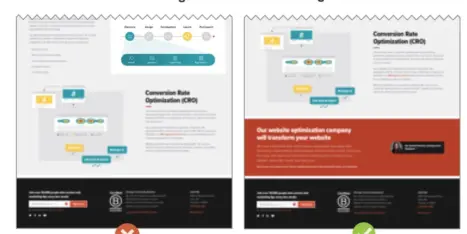Your company may have invested a lot of money in a new website in the last few years, and it is not mobile optimized. If you are looking at Google Analytics, you will see that mobile traffic is increasing every week! In fact, according to Gigaom.com, Black Friday sales on smartphone-optimized websites were up 187% this year.
What is wrong with the 3 year old website I already have?
Designed to be a specific screen size…
-
Screens for web use today are both very small and very large compared to the web users’ experience 3 years ago.
-
There is either a lot of empty space on big screens, or seems really tiny on small screens.
-
If your site is not responsive, it may require a lot of pinching and zooming. Test your site. If it is a pain for you to navigate and use, it will be for your potential customers.
Small screens…
-
Are everywhere; your website will likely appear really small, and in some cases will not be usable on mobile browsers.
-
Ironically, the older the website, the more optimized it is for small screens! Designs for 800×600 pixel resolution actually scale ok on a tablet in landscape mode, but the fingertip may be too big relative to navigation and links. Feel free to kill me with comments!
-
According to Harvard Business Review, “the easier a brand makes the purchase-decision journey, the higher its decision-simplicity score.” Make it easy for your users to access your site and get to the content they need and want.
Large screens…
-
Are usually far away from the viewer, and though the website will appear as intended, it will seem small from across the room.
-
Most people accept that increasing the zoom on the browser will suffice in a usable and pleasant website experience.
What is responsive web design (RWD)?
-
Responsive web design is when your website is designed and programmed to be fully optimized on various screen sizes and devices.
How would a responsive retrofit work for me?
-
A “responsive retrofit” is a fun term used to describe a technical change to the HTML, CSS, and Javascript to allow for the existing content, navigation and images to respond to smaller screen sizes without rebuilding your entire website.
-
All work is “behind the scenes” and would not disrupt your website administrators, your marketing team, or your website users.
What are the expected results of a responsive retrofit?
-
Your website should look and behave the same or better on desktop and large screens.
-
Your website should respond (or adapt) to mobile size screens to provide an optimized experience with larger fonts, collapsed navigation, larger hit states for fingertips, and scaled images.
-
Time on-site for mobile users should increase.
-
Conversion percentage for lead forms and ecommerce transactions should increase.
-
Sharing of website content by users on mobile devices should be a seamless experience.
- The lifespan of your website should increase by a couple years if the existing website was well designed and the content still relevant.
That sounds great, but what about the long-term?
Website design is evolving to ALL of the technology used to interact on the web. Compared to newer websites,
-
Your website may soon look out of date.
-
Your competitors may present a better message and take your customers.
Practicing a “content first” design strategy will have a profoundly positive impact on your marketing.
-
Content within the page is engaging with supplemental graphics or data
-
Content fluidly responds to the size of the screen whether small or large
-
The messaging is designed to draw the reader in and motivate them to take action
Retrofit first, content design later
A new responsive, content-first designed website will be expensive.
Extend the lifespan of your current website with a responsive retrofit and save up for the next version of your website!




